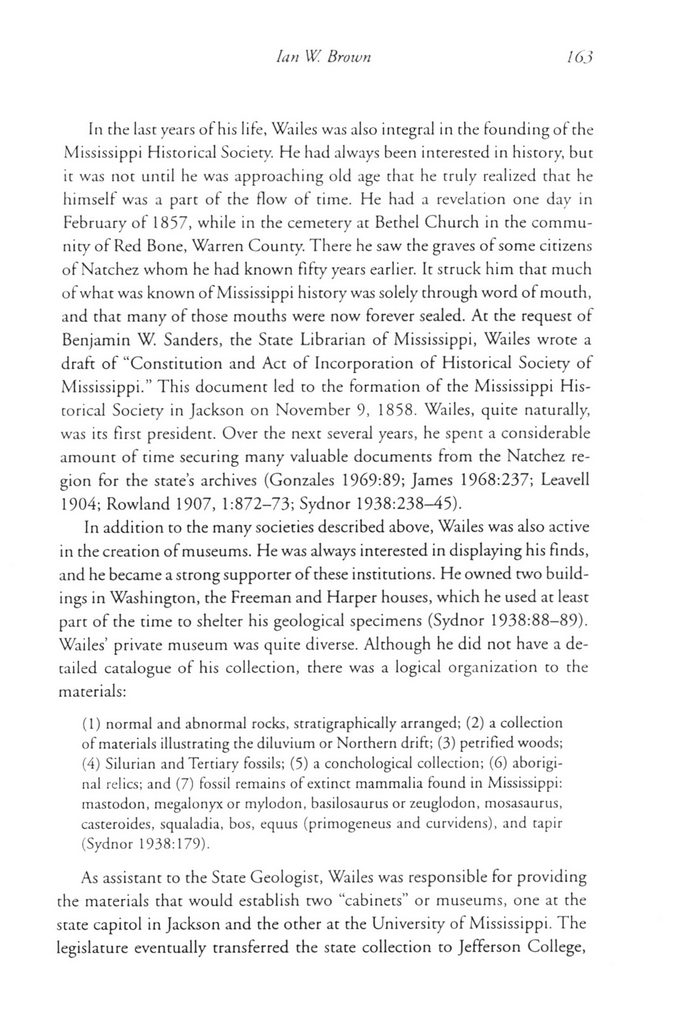This text was obtained via automated optical character recognition.
It has not been edited and may therefore contain several errors.
Ian W. Brown 163 In the last years of his life, Wailes was also integral in the founding of the Mississippi Historical Society. He had always been interested in history, but it was not until he was approaching old age that he truly realized that he himself was a part of the flow of time. He had a revelation one dav in February of 1857, while in the cemetery at Bethel Church in the community of Red Bone, Warren County. There he saw the graves of some citizens of Natchez whom he had known fifty years earlier. It struck him that much of what was known of Mississippi history was solely through word of mouth, and that many of those mouths were now forever sealed. At the request of Benjamin W. Sanders, the State Librarian of Mississippi, Wailes wrote a draft of ?Constitution and Act of Incorporation of Historical Society of Mississippi.? This document led to the formation of the Mississippi Historical Society in Jackson on November 9, 1858. Wailes, quite naturally, was its first president. Over the next several years, he spent a considerable amount of time securing many valuable documents from the Natchez region for the state?s archives (Gonzales 1969:89; James 1968:237; Leavell 1904; Rowland 1907, 1:872-73; Sydnor 1938:238-45). In addition to the many societies described above, Wailes was also active in the creation of museums. He was always interested in displaying his finds, and he became a strong supporter of these institutions. He owned two buildings in Washington, the Freeman and Harper houses, which he used at least part of the time to shelter his geological specimens (Sydnor 1938:88?89). Wailes? private museum was quite diverse. Although he did not have a detailed catalogue of his collection, there was a logical organization to the materials: (1) normal and abnormal rocks, stratigraphically arranged; (2) a collection of materials illustrating the diluvium or Northern drift; (3) petrified woods; (4) Silurian and Tertiary fossils; (5) a conchological collection; (6) aboriginal relics; and (7) fossil remains of extinct mammalia found in Mississippi: mastodon, megalonyx or mylodon, basilosaurus or zeuglodon, mosasaurus, casteroides, squaladia, bos, equus (primogeneus and curvidens), and tapir (Sydnor 1938:179). As assistant to the State Geologist, Wailes was responsible for providing the materials that would establish two ?cabinets? or museums, one at the state capitol in Jackson and the other at the University of Mississippi. The legislature eventually transferred the state collection to Jefferson College,

Wailes, Benjamin Archeology of Mississippi-07